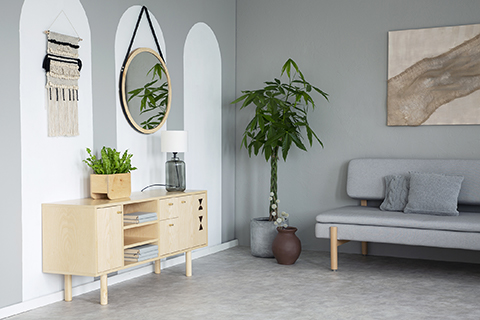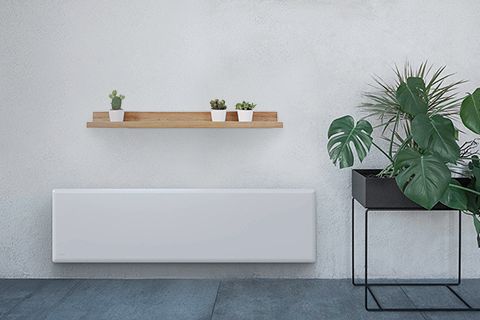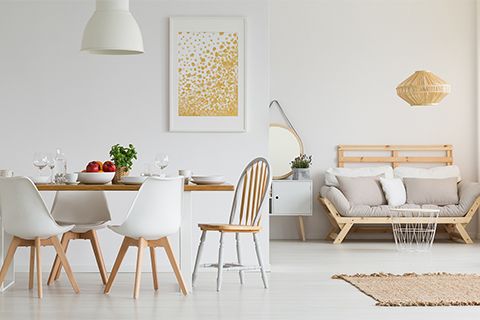
Troubleshooting for your Energy Control System
Need help with your Energy Control System? Here is a list of solutions to our more common technical problems.
No. Common mobile network connections (2G/3G/4G) and conventional firewall setups in network routers intended for private homes need no modifications from default settings. If you have special or advanced network setup (e.g. within a company), then you must consider:The network must allow the HUB outgoing TCP traffic on port 27778 to be controlled via the Internet
The network must allow the devices running the app outgoing TCP traffic on ports from 27790 through to 27799 to be controlled via the Internet
The HUB has an automatic update function. This feature works in such a way that the HUB will automatically download and install new versions of its software. This will happen when powered on, and regularly thereafter about every 18 hours. Ongoing updates are shown by the light quickly blinking for about 45 seconds. If your HUB does not display a constant green light, please check that it is connected to a network with a good Internet connection and adequate firewall settings..
We have put together the following Nobo Energy Control System guides to help you get started:Download the HUB setup guide here. Download the NCU2R receiver setup guide here.Download a basic guide for the app here.
If you do want to heat and are unable to change the 'Off' setting via the app, you can still change it to 'Eco' mode by manually pressing the top left button on the receiver controls.The sun icon () in the heater display should change to a highlighted moon (). You can then set the desired thermostat setting.
Our Energy Control System works best when you allow the weekly programs to control the heating. So, if you need to constantly override a single zone, we recommend creating 2 weekly programs.Call the first program "CURRENTLY ON". Program this setting so that each hour of the day is set to 'Comfort' status. Call the second program "CURRENTLY OFF". Program this setting so that each hour of the day is set to 'Off' status.When you want to turn the zone on, simply select the "CURRENTLY ON" program. To turn it off, select "CURRENTLY OFF" instead. If you only wish to control a single heater within a zone, you can do so either manually on the heater or you can move it into its own zone and control it via the app.
First, make sure the HUB is appropriately connected to both the power outlet and a network. If the HUB light is flashing, a software update is being downloaded. Please wait until the light is still and then try again.Also, double check that the wireless network used by the smartphone or tablet running the app is on the same local area network (LAN) as your wired network connected to the HUB. If both the wireless and wired networks are on the same LAN, there might be a firewall or other network restrictions preventing the communication. This is mainly relevant within companies or organisations with an advanced network configuration. Make sure there is no firewall between your wired and wireless networks, and that TCP traffic is allowed on port 27779. For the app to discover the HUB automatically, the network must allow UDP broadcast on port 10000 and/or UDP multicast on port 10001. If this is not possible (or desirable), the HUB can be given a static IP address from the router/DHCP server, and then connected via the Advanced option in the app's setup wizard. Though we do our best to ensure the system runs flawlessly using standard network technologies, some routers have issues that prevent the system from working properly. Such is the case of the ZyXEL P-2602, that does not work at all. Some customers have received a new router from their Internet provider after explaining the problem to their customer support. To work around such problems as well, combined modems and network routers can be set to "bridge mode". Then another network router can be connected to the first one to better provide the wired and wireless networks.
Each zone must be given a weekly program telling the receivers in it how to act during a week. For each day of the week, you can specify periods as 'Comfort', 'Eco', 'Away' or 'Off', and the receivers will react accordingly. The below settings work the same when performing a simple override on your whole home. Use the 'Comfort' setting when you want your room cosy and comfortable. In this mode, the display on your heater should show a sun icon in the top right corner The Comfort mode icon is a sun, displayed in the top right corner on the display of your Oslo heater
Your preferred 'Comfort' temperature is set either on the heater or in the Energy Control App. Use the 'Eco' setting when you don't need full heating. In this mode, the display on your heater should show a moon icon in the top right corner The Comfort mode icon is a sun, displayed in the top right corner on the display of your Oslo heater
Many people use this mode at night to take the chill off rooms. Your preferred 'Eco' temperature is set either on the heater or in the Energy Control App. Use the 'Away' setting when you don't need to heat your home, but it is in an area vulnerable to frost damage - typically used when you are away for an extended period over Winter.
The 'Away' temperature is fixed to 7°C and cannot be altered. Use the 'Off' setting when you don't need your heater at all. However, if you do want to heat and are unable to change the setting via the app, you can still change it to 'Eco' mode by manually pressing the top left button on the receiver controls.
The sun icon in the heater display should change to a highlighted moon. You can then set the desired thermostat setting. We recommend changing this setting via the app instead of manually overriding to 'Eco' mode.
A zone is simply a group of NCU2R receivers operating in the same manner. If a group of receivers is supposed to follow the same weekly program and temperature settings, then it is a good idea to group them together in a zone through the app. For example, all the heaters in your living room. However, a room can consist of several zones, and a zone can include receivers in different rooms. For example, you may want to set up each room in your house as a different zone; as this would allow to have the master bedroom at a different temperature than the nursery. Alternatively, some people may want to simplify their home heating management, and allocate all bedrooms to the same zone so they can be controlled simultaneously.
Whatever your choice, we recommend you to name each zone for easy recognition.
Use the 'Away' setting when you don't need to heat your home, but it is in an area vulnerable to frost damage - typically used when you are away for an extended period over a harsh Winter.
The 'Away' temperature is fixed to 7°C and cannot be altered.
Use the 'Comfort' setting when you want your room cosy and comfortable. In this mode, the display on your heater should show a sun icon in the top right corner The Comfort mode icon is a sun, displayed in the top right corner on the display of your Oslo heater
Your preferred 'Comfort' temperature is set either on the heater or in the Energy Control App.
Use the 'Eco' setting when you don't need full heating. In this mode, the display on your heater should show a moon icon in the top right corner The Comfort mode icon is a sun, displayed in the top right corner on the display of your Oslo heater.
Many people use this mode at night to take the chill off rooms. Your preferred 'Eco' temperature is set either on the heater or in the Energy Control App.
Use the 'Off' setting when you don't need your heater at all.
You can download the ECS app for free from:
iTunes, for all Apple devices (iPhone, iPad)
Google Play, for all Android devices
Alternatively, you can scan the following QR code to be taken to the appropriate download screen:
Control via the Internet is enabled by default, but can be turned off in the app under Menu > Settings. Start the app while connected to your local network and make sure the checkbox "Allow control via Internet" is ticked.
Also make sure that you have updated your app to the newest available version, to fix some known issues. Your app can be updated in Google Play (for Android) or Apple App Store (for iOS – iPhone/iPad). Control via the Internet requires the app to be running software version 3 or higher. You can check this in the app under Menu > Settings > App info.
When the app and the HUB have been upgraded to a version that supports control via Internet, each app must first be connected on the local network to exchange encryption keys with the HUB. Control via the Internet only works after you have started the app on the local network at least once after the upgrade.
Control via the Internet also requires that the HUB is running software version 66 or higher. You can check this in the app under Menu > Settings > HUB info. The HUB has an automatic update function. If your HUB is not automatically updated, please check that the HUB is connected to a network with a good Internet connection. See also the troubleshooting section on "HUB is not updated automatically".
The Energy Control System is based on standard network technologies that should be compatible with all routers. We do our best to ensure that the ECS runs flawlessly anywhere, however some network routers have issues that prevent it from working properly. Such is the case of the ZyXEL P-2602, that does not work at all. Some customers have received a new router from their Internet provider after explaining the problem to their customer support. To work around such problems as well, combined modems and network routers can be set to "bridge mode". Then another network router can be connected to the first one to better provide the wired and wireless networks.
If after doing all these checks, you are still unable to control your system via the Internet, try checking if the system works using a different mobile/tablet or another network to help determine the cause of the problem. If you don't have the opportunity to do so, please contact us on 1300 556 816 or at service@glendimplex.com.au having the following information ready:
HUB Serial Number/ID - Available in the app under Menu > Settings. 12 digits, for example "102000123123"
HUB Software Version - Available in the app under Menu > Settings. For example "89"
App Software Version - Available in the app under Menu > Preferences. For example "3.0.5087.13040"
Name and Model of the router your HUB is connected to - For example "DLink DIR-655", and any other information about special network setup you may have, like firewall settings, web proxies, etc
The HUB has a green light showing its current status:
Constant light - Fully connected to local network, Nobo update server (used to automatically update the HUB) and Nobo proxy server (enables control via Internet)
1x blink - Not connected to any network
2x blink - Connected to local network, but not connected to Nobo update server nor the Nobo proxy server
3x blink - Connected to local network and Nobo update server, but not to the Nobo proxy server
4x blink - Connected to local network and Nobo proxy server, but not to the Nobo update server
Continuous blinking for around 45 seconds - Automatic software update in progress. During this period, the HUB might not display in the app or allow to be set up. Please wait until the light is still and then try again.
No light - The HUB has no power
Make sure the supply cable is well connected to both the power outlet and the HUB.
If that doesn't fix the issue, contact our Customer Care team on 1300 556 816.


